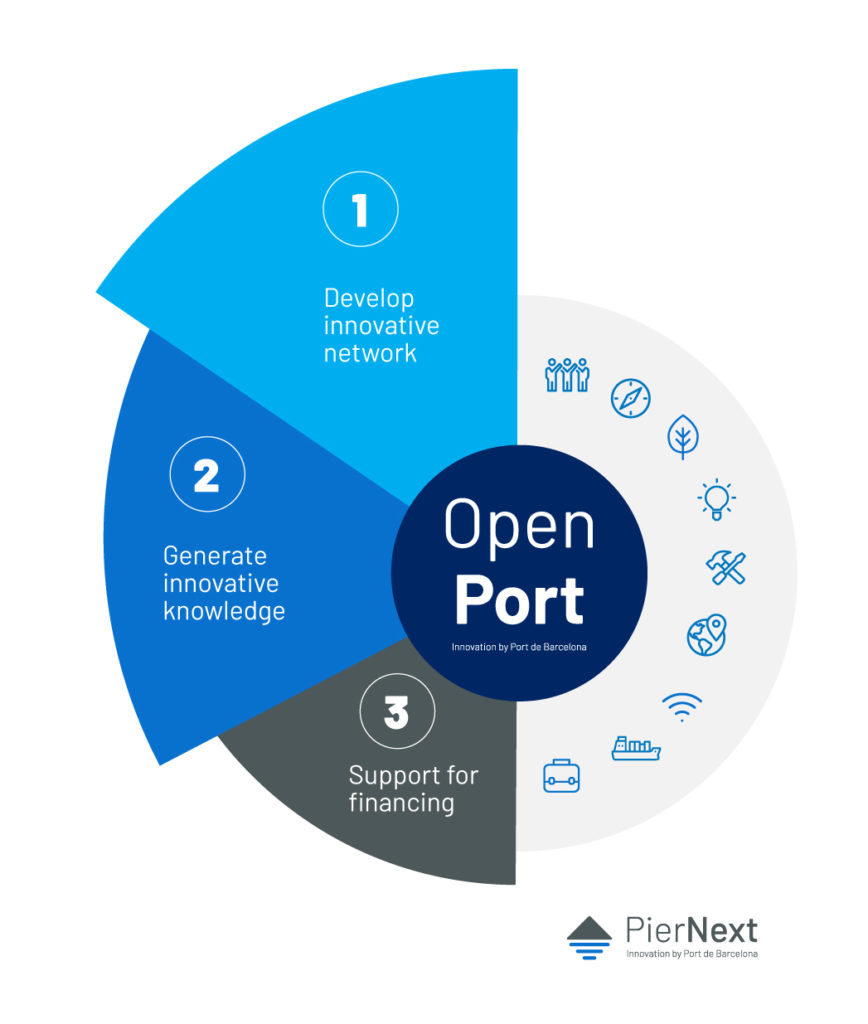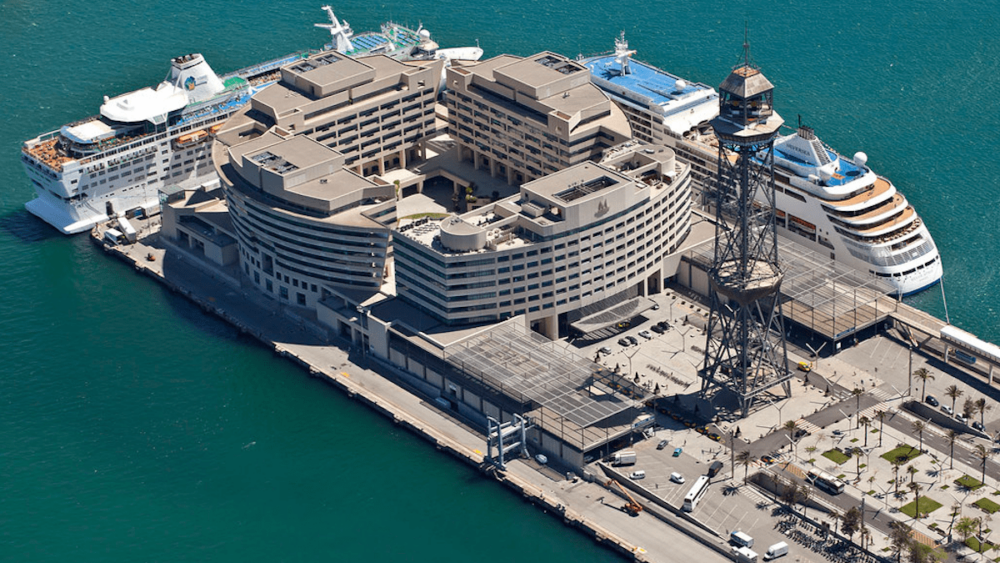Companies are increasingly seeking innovative solutions to overcome their challenges. In the world of innovation today, it is common for there to be solutions which emerge in other organisations within the same ecosystem or in another sector than the entity that needs them. Open innovation is a reality, and the OpenPort programme is based on it. This programme “seeks to take advantage of technologies and experiences from other sectors in order to implement them in the port sector”, says Pedro Arellano-Gil, Deputy General Manager and Head of Corporate Development at Port of Barcelona and driving force behind the OpenPort programme.
Port of Barcelona, synonymous with innovation
In the age of big data, artificial intelligence and connectivity, innovation is often equated with technology. Yet even though digitalisation and automation are important, they are not the only levers of change. As Carles Rúa, Head of Strategic Projects and Innovation at Port of Barcelona, says, innovation has to be sustainable, open, collaborative and market-driven, and, of course, it has to have a strong technological base.
From the standpoint of innovation, Catalina Grimalt, Deputy General Manager of Organisation and Internal Resources, identifies seven main future challenges of Barcelona’s port, as a SmartPort:
- Logistics, with the goal of integrating infrastructures and processes so that the logistics chain can be more predictable and efficient.
- Mobility, with the goal of seeking to effectively and sustainably manage traffic and transport.
- Environment, with the goal of working to efficiently manage resources, lower emissions and promote clean energies.
- Economics, with the goal of promoting competitiveness of not only the port but also its entire economic and industrial environment.
- People-centred, with the goal of fostering social cohesion, diversity and citizen participation in the port.
- Governance, with the goal of working for transparent, sustainable, participative and cooperative management.

The response via OpenPort
The participation of the entire innovative ecosystem is essential in the quest for solutions to present and future challenges. With the mission of bringing this to the Port of Barcelona, initiatives like OpenPort have been developed with the overarching objective of “promoting the competitiveness of the sector and the industry in the region thanks to the shared innovation between the Port Community and the innovative ecosystem”, as explained by Arellano-Gil, the programme director.
To accomplish this, this open innovation programme, which is open to the participation of any company that thinks it can contribute, has three main strands:
- Developing an innovative network. The main objective is for the Barcelona Port Community to embrace the innovative ecosystem, meant as the entire set of companies, start-ups or experts with novel solutions. The OpenPort programme seeks to generate collaborative relations and shared innovation among all the participants in the programme, regardless of whether or not they are part of the Port Community.
“The focus is on building a network and generating spaces where ideas, challenges and analyses can be shared between the Port Community and the innovative ecosystem”, stresses Arellano-Gil. Today, the Catalan port already has different spaces where long-term viewpoints on innovation can be shared.
Examples include projects like Port Innova, in which the Port of Barcelona seeks to build a space of contact between the business reality and the professional opportunities that Port of Barcelona offers vocational education students, and initiatives like the recent Startup Weekend.
![Networking session among the participants of the program to create collaborative relationships and share innovation tips. [Image of the Port of Barcelona]](https://piernext.portdebarcelona.cat/wp-content/uploads/2019/07/OpPo02.jpg)
- Generating innovative knowledge. Information is essential to launching any innovation model. Having references, being abreast of the opportunities and trends, and being able to situate yourself optimally in the target sector and market are essential to developing and applying any innovative idea. Therefore, OpenPort seeks to contribute to generating this knowledge by holding inspiring and informative talks, sharing innovative experiences via an innovative knowledge hub and participating in sessions on good practices, among other initiatives.
- Supporting financing. The third key strand in OpenPort revolves around raising funds. Through this tool, the Port of Barcelona supports companies and innovative projects search for means of financing, both public and private, and in particular via the Fondo Puertos 4.0.
“We have a first-rate tool, the Fondo Puertos 4.0., which was developed with the other ports in Spain, and to which the Port of Barcelona is going to make a major contribution in the next five years”, says Arellano-Gil. Companies that join the OpenPort programme will also receive guidance and support if they need other sources of financing, such as what ACCIÓ (Agency for Business Competitiveness) and the European Union offer.
Any company, from either the Port Community or the innovative ecosystem in general, can join the OpenPort programme. “From an innovative project or a start-up to a traditional engineering firm, the key is for them to have solutions that they think they can contribute responses to present and future challenges”, concludes Arellano-Gil. The most important thing is to ensure that any opportunities that appear in the present or future can be seized upon because there is a very powerful innovative business community with the capacity to respond quickly.
 The OpenPort program seeks to take advantage of technologies and experiences from other sectors in order to implement them in the port sector. [Image of the Port of Barcelona]
The OpenPort program seeks to take advantage of technologies and experiences from other sectors in order to implement them in the port sector. [Image of the Port of Barcelona]
 The OpenPort program seeks to take advantage of technologies and experiences from other sectors in order to implement them in the port sector. [Image of the Port of Barcelona]
The OpenPort program seeks to take advantage of technologies and experiences from other sectors in order to implement them in the port sector. [Image of the Port of Barcelona]




![Networking session among the participants of the program to create collaborative relationships and share innovation tips. [Image of the Port of Barcelona]](https://piernext.portdebarcelona.cat/wp-content/uploads/2019/07/OpPo02.jpg)



